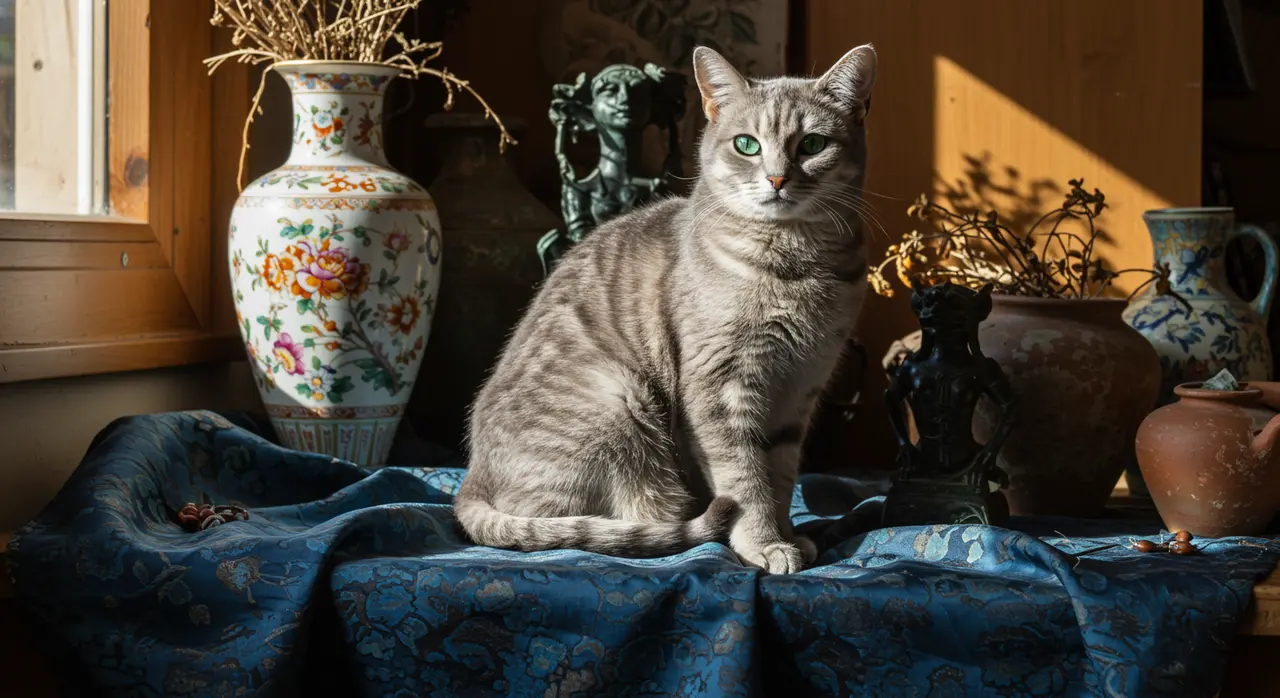Domestic Cats in China Traced to Tang Dynasty via Silk Road, Study Reveals
53 views
New research has traced the origins of domestic cats in China to approximately 1,400 years ago, during the Tang Dynasty, upending previous assumptions about their history in the region. Long cherished for their elegance and enigmatic charm, cats appear to have been introduced as luxury gifts via the legendary Silk Road, bridging the Middle East and East Asia. Genetic evidence, drawn from the bones of ancient cats, tells a story of their journey from the rugged terrains of Kazakhstan into the hands of Chinese elites. Over time, these initial exotic imports transcended their status as mere diplomatic curiosities to become integral to Chinese households and religious traditions.
Tracing Paws Across the Silk Road: The Evolution of Cats in Ancient China
For decades, a lingering question puzzled historians and biologists: when and how did domestic cats meander their way into Chinese life? Conventional theories speculated that cats may have been domesticated locally during the Han Dynasty (202 B.C.–A.D. 220), a period associated with agricultural expansion and bustling trade routes. However, the latest study refutes this notion, providing a much later date for their arrival in China. Researchers analyzed DNA samples from the remains of 22 cats unearthed at 14 archaeological sites across China, ultimately identifying 14 as domestic cats. The oldest among these dated to approximately A.D. 730—firmly placing their introduction into the Tang Dynasty, centuries after earlier estimates.

Interestingly, the analysis uncovered a unique genetic signature linking these ancient cats to the African wildcat lineage domesticated in the Fertile Crescent of the Middle East. The animals likely traveled eastward in the caravans of merchants or diplomats, carried as distinctive and highly prized companions for their sleek forms and mesmerizing coats. Some of these early cats bore striking patterns—such as immaculate white fur or tabby coats with patches of white—making them particularly desirable as symbols of status and sophistication among the Chinese elite.
These discoveries redefine more than just timelines; they shift the narrative surrounding cats’ historical role in Chinese society. Rather than an organic process of domestication spurred by agricultural needs, their presence in early China appears to have been rooted in global exchange and the cultural values associated with rarity and exoticism. They were, at first, treasures reflecting the cosmopolitan ambitions of the Tang era, a golden age of cultural flourishing and international connectivity.
Yet, even as cats initially catered to the tastes of the aristocracy, their allure soon permeated broader layers of Chinese society. Over subsequent centuries, they evolved from opulent gifts to beloved household companions, their practicality as pest controllers blending seamlessly with their otherworldly elegance.
A Cultural Embrace and Mystical Reverence
Cats did not merely find a place in Chinese homes; they became woven into the spiritual fabric of the culture. Once foreign and unfamiliar, they gradually acquired deep symbolic resonance. By the Song Dynasty (960–1279), cats were not only cherished for their serene companionship but also revered in folk religion, where they were associated with auspiciousness and prosperity. Many households considered them esteemed guests, offering them scraps of food in specially designated spaces, believing their presence brought good fortune.
The feline mystique also extended into Chinese art and literature. Their graceful posture and enigmatic gaze found frequent expression in paintings and poems, often imbued with metaphors of freedom and refinement. In one such Song-era poem, a cat’s ability to patrol darkened alleys at night became an allegory for vigilance and hidden strength.
Moreover, historical records depict cats as protectors against spiritual mischief, such as chasing away malevolent spirits or guarding against omens of bad luck. In markets and temples alike, cats were welcomed as both practical allies and talismans of safety, embodying a balance of the earthly and the ethereal.
A Broader Reflection on the Silk Road’s Legacy
The arrival of cats in ancient China underscores the complex tapestry of connections facilitated by the Silk Road. Often remembered for its bustling trade in silk, spices, and artifacts, the network also ferried intangible cultural exchanges that redefined identities on both ends of its routes. Cats offer a surprisingly vivid example of how globalization, in its earliest forms, left an imprint even on intimate corners of domestic life.
What makes this story particularly compelling is the bidirectional nature of these exchanges. While China acquired cats from the West, it exported its own marvels—silk, ceramics, and paper—to distant lands. The adaptation of domestic cats to their new Chinese surroundings highlights humanity's unceasing tendency to recontextualize foreign innovations, embedding them into local traditions while retaining whispers of their origins.
In some ways, the feline migration across continents also resonates with our own modern experiences of global interconnectedness. Even in an age where boundaries blur and identities merge, our fascination with the exotic—those glimpses of worlds far removed from our own—remains as potent as ever. Much like the Tang Dynasty’s elite, we, too, are shaped by our encounters with the unfamiliar, reinventing them into forms uniquely ours.
As researchers continue to probe history through genetics and archaeology, the story of the domestic cat in China reminds us of the unexpected ways in which cultures converge. From Kazakhstan to the inner chambers of Tang courtly life, these cats carried not just themselves but fragments of the world they traversed, etched in their genes and immortalized in their fluffy charisma.